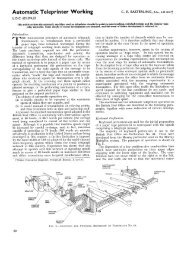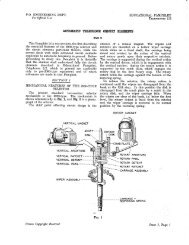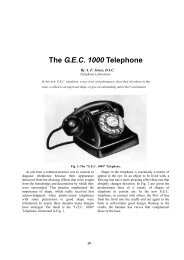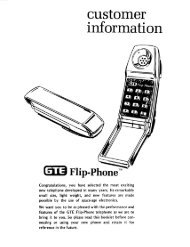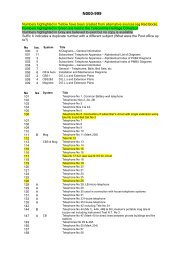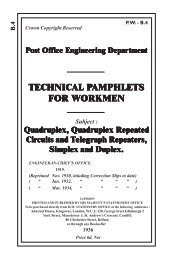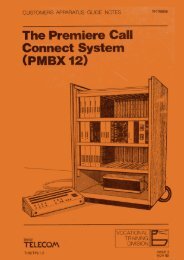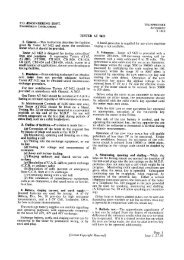TRAFFIC CONTROL TELEPHONE SYSTEMS Circuit - Sam Hallas
TRAFFIC CONTROL TELEPHONE SYSTEMS Circuit - Sam Hallas
TRAFFIC CONTROL TELEPHONE SYSTEMS Circuit - Sam Hallas
Create successful ePaper yourself
Turn your PDF publications into a flip-book with our unique Google optimized e-Paper software.
Page 16<br />
It is difficult to measure the current through the selectors, due to the smallness<br />
and the fact that each impulse is of short duration and in opposite direction to the<br />
preceding one. However, with a centre zero 10 milliampere-scale ammeter the swing<br />
of the needle on each side of the zero point should be equal for the regular stepping<br />
impulses. The value of the reading will depend on the damping of the meter and a<br />
minimum value only can be obtained by trial.<br />
If a voltmeter is used to measure the potential at that station, a high-resistance<br />
meter, of not less than 15,000 ohms, must be used. A centre zero scale meter is<br />
preferable and, in this case also, the swing of the needle on each side of the zero point<br />
should be equal for the regular stepping impulses. The amount of the swing will<br />
somewhat depend on the damping of the meter and a definite value cannot be given.<br />
A minimum value can be obtained by trial.<br />
As a general rule, adjustment of the selector in the field is not recommended. If<br />
the cause of failure of operation of the selector is quite obvious there is no objection<br />
to correcting the trouble at once. Extreme care should be taken in adjusting the<br />
selector. If the cause of the failure is not easily seen or corrected, we recommend that<br />
a spare selector be substituted in its place and the faulty selector returned to Standard<br />
Telephones and Cables Limited for investigation. When a selector is returned, a<br />
statement of the conditions and, as nearly as possible, the manner in which the<br />
selector acted, should be sent along with the selector to aid in determining the cause<br />
of failure.




